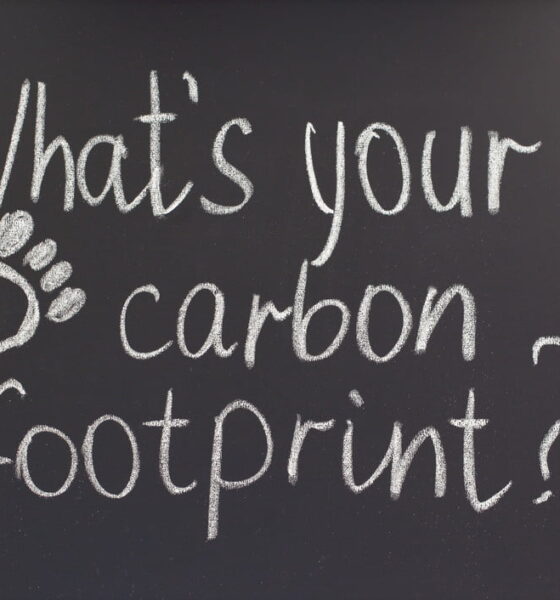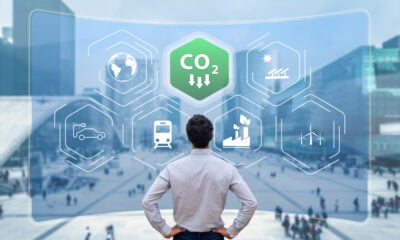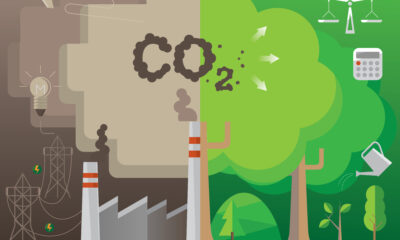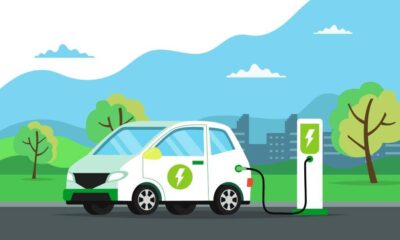

Environment
How Webinars and Online Courses Are Great for Business Carbon Footprints
For years now, people have been talking about how we are marching steadily toward a truly paperless office. Even in your own day-to-day life, you’ve likely witnessed several dramatic changes to how much paper you actually use. Maybe you’ve opted out of receiving printed statements from your bank and credit card, opting for digital statement delivered via e-mail instead. Maybe you use the app on your smartphone for discounts at the local store instead of printing out paper coupons. These little changes add up.
And one area where individuals and businesses alike can significantly reduce their carbon footprints is in the realm of online education. Some people have even gone so far as to assert that online courses can indeed help us save the world in truly amazing and profound ways. Now if imagine if the rest of the world caught up with this rising trend too.
Connect with Live Webinars
Consider some of the professional training seminars that are put on by a myriad of industries and organizations each and every year. For any given conference or event, you can expect hundreds or even thousands of people in attendance, many of which will be visiting from out of town. Whether they arrive by plane, train, bus or hovercraft, the carbon footprint can be significant. Imagine if there are international attendees flying in from overseas too.
With rapid advances in technology and the widespread availability of high-speed Internet, live webinars like those powered by ClickMeeting can be astronomically more efficient. Attendees (and presenters) can access the live video feed from nearly anywhere in the world and the live video provides the same kind of highly interactive environment as gathering around the same physical location.
Costs are minimal (and decidedly less than how much it would cost to fly halfway around the world for a lecture), as are technology requirements. Best of all, the live webinar can be easily recorded and archived for later retrieval and reference. This is great for presenters and students alike, and it’s something that is not normally available with traditional, in-classroom learning.
Eliminate the Commute
It’s not just about cutting down on unnecessary flights and trips to the airport either. By and large, learning opportunities don’t really happen in just one day or over the course of a three-day conference. You sign up for a program and this could entail “attending” a lecture or class several times a week. And whether you’re driving a car or taking the bus, you are leaving a carbon footprint every time you travel from your home to the classroom. Several times a week. For months. That adds up.
With e-learning, the commute is essentially eliminated altogether. Instead of hopping in your car and fighting with traffic for a half hour or more to get to campus, you simply walk over to your computer, turn it on, and fire up your web browser. The environmental impact is drastically reduced, especially when you extend this dynamic across dozens, hundreds or even thousands of students.
Forget About Printed Materials
Transportation, whether it’s repeated shorter distance commutes within the city or cross-Atlantic flights to attend overseas seminars, is only one part of the picture too. Perhaps an even more pronounced area where online courses are beneficial in reducing carbon footprints is with printed materials.
Think about when you attend a more traditional kind of class. You may be handed out a class syllabus on paper. You may have to purchase textbooks, reference materials, workbooks, study guides, and all sorts of other printed items. That’s a lot of paper (and ink). When you have online courses, which can prove quite profitable even when they’re drastically cheaper than institutional learning, all the course materials can be digital.
Students access their “textbooks” and reference materials through a web browser, as a downloadable PDF, via a membership site, or as an e-book. When you’ve got tests to take or questionnaires to fill out, those can be completely digital too. Printed materials become a thing of the past. Remember that Google literally stores billions of data files, all without any paper. E-learning can operate in much the same fashion.
Minimize Resource Use
It takes a lot of energy and resources to maintain the facilities and classrooms needed for a traditional school. Think about how much it takes to heat up a lecture hall in the dead of a freezing winter or how much electricity it takes to power those lights in the hallways. It’s not just you and the instructors either. What about the support staff and the resources needed there? Janitorial staff need water and cleaning supplies, for instance, and they’ve got to commute to their workplace too. These all contribute to the overall carbon footprint of traditional in-classroom education.
And consider the limitations of a physical space like a lecture hall or classroom. By design, these rooms can only accommodate a set maximum number of students. If the lecture hall has seats and desks for 200 students, that really is how many students it can have. By contrast, online courses are much more easily scaled to accommodate more and more students. One online class can grow from 200 students to 2,000 students far more easily than a traditional class can, all while leaving only an incrementally larger carbon footprint than the smaller class size.
The amount of server space needed to maintain such a course really isn’t all that different whether you have just one student or you have one hundred students.
Cut Out the Little Things
Every little bit helps and every little thing makes a difference. And this is true with online learning as compared to in-person classes too. When you go to a physical classroom, you are more likely to take out physical paper to take notes with pens and erasers and binders and other stationery. You’re more likely to grab a coffee to go at the nearby cafe rather than brew your own at home. You’re more likely to have takeout containers and all the related paraphernalia for your lunch, rather than making a meal at home.
When you attend a class in person, you’re more likely to use a larger number of single-use items over the course of the day, week, or month. All of these add up. By contrast, when you learn from the comfort of home with online courses, many of those wasteful behaviors are minimized if not eliminated altogether. And again, when you extend this across hundreds or thousands of students, the impact is substantial.
As a student, it’s important to do your part. As a business, you can do well by doing well too. Online courses are great for business carbon footprints and indeed they can be great for business too.


 Environment9 months ago
Environment9 months agoAre Polymer Banknotes: an Eco-Friendly Trend or a Groundswell?

 Environment11 months ago
Environment11 months agoEco-Friendly Home Improvements: Top 7 Upgrades for 2025

 Features8 months ago
Features8 months agoEco-Friendly Cryptocurrencies: Sustainable Investment Choices

 Features9 months ago
Features9 months agoEco-Friendly Crypto Traders Must Find the Right Exchange





























